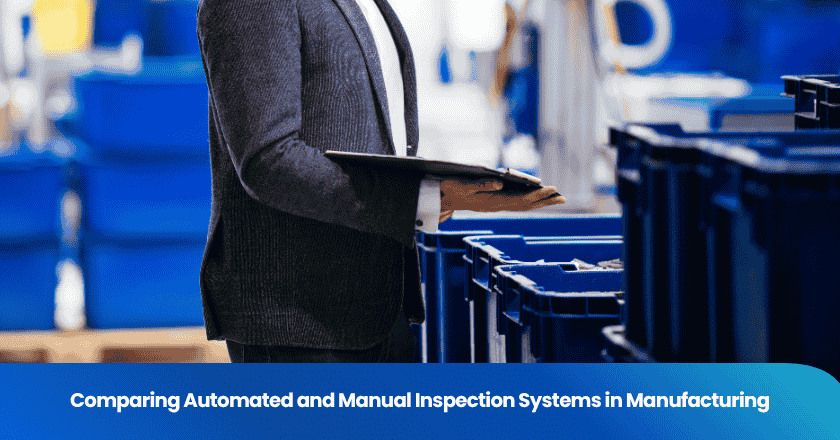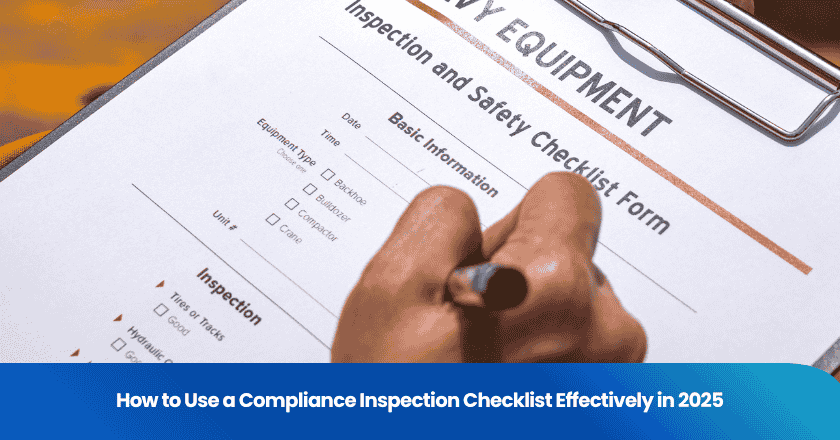
You face a critical choice in manufacturing operations: rely on manual inspection or invest in automation. Inspection systems play a central role in quality control, directly influencing production efficiency and your bottom line. Recent advancements—like AI, 3D imaging, and hyperspectral analysis—have elevated automated solutions. Automated quality control now accounts for over half of inspection processes, with producers reporting 30–50% fewer defects within a year. As you consider accuracy, speed, cost, and how each system handles different materials, your decision shapes the future of your production.
Types of Inspection Systems
Manual Inspection
You may rely on manual inspection when you need a hands-on approach to quality control. In this method, trained operators visually examine products or use simple tools to check for defects. Manual inspection works well for small batches, unique products, or situations where human judgment is essential. You can quickly adapt to new defect types or unusual materials. However, manual inspection often depends on the skill and attention of each inspector. Fatigue and subjectivity can affect results, especially during long shifts or repetitive tasks.
Automated Inspection Systems
Automated inspection systems have transformed manufacturing by delivering speed, consistency, and high accuracy. You use these systems to detect defects, measure dimensions, and monitor product quality in real time. Automated inspection systems employ advanced technologies, including high-resolution cameras, specialized lighting, and sensors. These components capture detailed images and data from every product on the line.
Tip: Automated inspection systems can identify issues such as misalignments, cracks, and packaging errors much faster than manual methods.
You benefit from a range of automated inspection systems, each designed for specific tasks:
| Type of Inspection System | Description |
|---|---|
| Vision Inspection Systems | Automatically categorize defects such as spots, wrinkles, scratches, and more, providing real-time feedback. |
| Precision Grammage Control Systems | Measure grammage in-line without interrupting production, adjusting automatically for consistency. |
| Complete Product Traceability | Combine vision and grammage systems for comprehensive defect mapping and product information tracking. |
| Manufacturing Execution Integration | Integrate quality control with broader manufacturing processes for proactive quality management. |
You can also choose from specialized automated inspection systems, such as line scan systems for moving products, microscope imaging for tiny defects, X-ray for internal flaws, and hyperspectral imaging for material composition. Automated inspection systems use image processing software and machine learning algorithms to analyze data and improve over time. With these systems, you achieve higher throughput, reduce human error, and ensure your products meet strict quality standards.
Key Differences
Process
You approach manual and automated inspection systems with different workflows. Manual inspection relies on your intuition and experience. You visually examine products or use simple tools to spot defects. This process works well for nuanced evaluations but often slows down production. Fatigue and inconsistency can affect results, especially during long shifts. Automated inspection systems, on the other hand, use cameras and software to scan products quickly and consistently. These systems excel in large-scale environments where speed and uniformity matter most.
Note: Manual inspection gives you flexibility for unique or complex products, while automation boosts efficiency for repetitive tasks.
Technology
You see a clear divide in the technology behind each system. Automated inspection systems use high-resolution cameras, advanced lighting, and machine learning algorithms. These tools process visual information rapidly and detect even the smallest defects. The technology operates in hazardous environments and improves over time through data analysis. Manual inspection depends on your visual perception and judgment. Human inspectors may struggle with complex shapes or tiny flaws, and results can vary from person to person.
Use Cases
You select the right inspection approach based on your industry and product needs. In aerospace, you might use inspection systems to detect surface defects on critical equipment. Home goods manufacturers check material quality and dimensions to meet customer standards. Food and beverage producers rely on automated systems for labeling and packaging checks. Pharmaceutical companies use these systems to spot labeling errors and packaging defects. Manual inspection still plays a role when you need nuanced judgment or deep institutional knowledge that machines cannot replicate.
Manual Inspection Systems: Pros and Cons
Advantages
Manual inspection systems offer unique strengths that you can leverage in specific manufacturing environments. You gain flexibility and adaptability that automated solutions often lack. Human inspectors can quickly adjust to new products or defect types without the need for lengthy retraining or reprogramming. This adaptability proves especially valuable when you handle complex products or work with lower production volumes that require frequent changes.
- You can respond to unexpected situations on the production line.
- Human inspectors excel at identifying subtle or unusual defects that automated systems may overlook.
- Manual inspection works well for prototypes, custom orders, or products with intricate details.
- You benefit from the ability to make judgment calls in ambiguous scenarios, where context and experience matter.
Tip: When you need to inspect a new product or adapt to a sudden change in production, manual inspection systems allow you to pivot quickly without waiting for software updates or new data sets.
Limitations
Despite these advantages, manual inspection systems present several challenges that can impact your overall quality control and operational efficiency. Human inspectors are susceptible to fatigue and subjectivity, which can lead to inconsistent results. Research shows that error rates for manual inspection can range from 10% to 20%, with inspectors missing about 15% of defects on average. Fatigue and variability can cause missed defects to rise as high as 40%, especially during long shifts or periods of short staffing.
- Inspection accuracy declines with extended hours and mental fatigue.
- Throughput remains limited, as a single inspector may only process tens of parts per hour.
- Manual inspection lacks data-driven optimization, making it difficult to improve processes over time.
- Rising labor costs and high turnover rates challenge the sustainability of manual inspection.
- Extensive training requirements can slow down onboarding and reduce reliability.
- You may face bottlenecks in production when relying solely on manual inspection, especially as demand increases.
Note: Automated inspection systems can achieve defect detection rates exceeding 95%, while manual inspection often struggles with small or subtle defects, such as those smaller than 0.1 mm.
You should also consider the financial impact. Manual inspection systems require ongoing investment in labor and training. As labor costs rise, maintaining a large team of skilled inspectors becomes less feasible. This can limit your ability to scale operations or maintain consistent quality as production demands grow.
Automated Inspection Systems: Pros and Cons
Advantages
Automated inspection systems have become essential in modern manufacturing. You gain a significant edge in quality control by leveraging advanced cameras, sensors, and artificial intelligence. These systems deliver high accuracy, rapid inspection speed, and consistent results across large production volumes.
You can see that automated inspection systems outperform manual inspection in accuracy. Machine vision systems use high-resolution cameras and specialized lighting to capture detailed images of every product. AI algorithms analyze these images in real time, identifying even the smallest defects that human inspectors might miss. Automated visual inspection excels at defect detection, especially for surface anomalies and structural deviations at a microscopic level.
- AI-based machine vision systems identify subtle defects and deviations beyond human detection.
- Deep learning algorithms reduce false positives and negatives, improving product quality and reducing waste.
- Automated visual inspection adapts quickly to new product types with minimal human input.
Automated inspection systems also boost production efficiency. You benefit from faster inspections, which minimize production interruptions and streamline operations. Automated visual inspection provides real-time records, supporting long-term quality management and compliance with industry standards. By reducing the need for manual checks, you lower labor costs and decrease the risk of human error.
- Faster inspection speed increases throughput and reduces bottlenecks.
- Automated visual inspection ensures consistent defect detection, regardless of shift or operator.
- Machine vision systems help you reduce scrap rates and improve yield.
Automated visual inspection systems can analyze large data volumes, learning from vast datasets to identify new defect types. This adaptability is crucial for dynamic manufacturing environments where product designs and materials change frequently. You can rely on automated inspection systems to maintain high standards, even as production demands grow.
Tip: Automated visual inspection not only improves defect detection but also supports traceability and data-driven decision-making throughout your manufacturing process.
Limitations
Despite their many strengths, automated inspection systems present several challenges you must consider. The initial investment for automated visual inspection can be substantial. You need to budget for hardware, software licenses, infrastructure, installation, and integration. Training your team to operate and maintain these systems is also necessary.
- The total cost for automated inspection systems ranges from $110,000 to $200,000, higher than manual systems.
- Initial investment includes hardware, software, and integration costs.
- Training costs are required for effective operation and maintenance.
You must also plan for ongoing maintenance and updates. Automated inspection systems require regular calibration and software updates to maintain optimal performance. Skilled personnel are needed for deployment, troubleshooting, and system upgrades. Machine vision systems depend on high-quality data for effective AI and machine learning training. Poor data quality can limit defect detection accuracy and system reliability.
- Regular maintenance and updates are necessary for peak performance.
- Skilled staff are essential for troubleshooting and system management.
- High-quality data is required for effective machine learning.
Integrating automated inspection systems with your existing manufacturing processes can be complex. Strategic planning is essential to avoid disruptions and ensure smooth operation. You need to address both technical implementation and organizational change management. Automated visual inspection systems may not be suitable for every product or material, especially if your production involves highly variable or unique items.
- Integration with current manufacturing systems is crucial to prevent workflow disruptions.
- Strategic planning is needed for both technical and organizational aspects.
While automated inspection systems offer long-term savings through reduced waste and improved efficiency, you must weigh these benefits against the upfront costs and ongoing requirements. Automated visual inspection delivers exceptional speed, consistency, and defect detection, but it demands careful planning and skilled management to achieve the best results.
Note: Automated visual inspection can lead to a 25–35% decrease in maintenance costs compared to manual systems, supporting your long-term production efficiency goals.
Hybrid Inspection Systems
Combining Strengths
You can achieve the best of both worlds by combining manual and automated inspection systems. Hybrid inspection systems use human expertise alongside machine vision systems and automated inspection systems. This approach lets you address complex or ambiguous defects that require human judgment, while also leveraging the speed and consistency of automated inspection systems. In a recent proof of concept, a large medical device manufacturer compared traditional manual inspection with a hybrid human-machine process. The hybrid approach led to a 65% increase in component inspection quality. You benefit from the high accuracy of machine vision systems, which often reach 95–99% accuracy, far surpassing the typical human rate of below 80% in repetitive tasks.
Machine vision systems in hybrid setups handle repetitive, high-volume checks. Human inspectors focus on unique or challenging cases. This division of labor reduces errors and ensures that you do not miss subtle defects. AI visual inspection addresses the slow pace and error-prone nature of manual inspections, giving you faster and more reliable defect detection. You can also adapt quickly to new product types or changing production requirements.
Tip: Use hybrid inspection systems to balance efficiency and adaptability, especially when your products or materials change frequently.
When to Use Hybrid
You should consider hybrid inspection systems when your production environment demands both flexibility and high throughput. Hybrid systems excel in situations where automated inspection systems alone cannot handle all defect types or when you need to scale inspection tasks dynamically.
The following table highlights scenarios where hybrid inspection systems provide the greatest benefits:
| Scenario | Benefit |
|---|---|
| Enhanced Scalability | You can allocate resources dynamically, overcoming hardware limitations. |
| Reduced Maintenance | AI adapts to production changes, minimizing recalibration and specialized expertise. |
| Improved Adaptability | You update inspection models quickly, reducing downtime and reliance on specialized support. |
You gain the ability to update machine vision systems centrally, which reduces downtime and keeps your inspection process agile. Hybrid inspection systems support your quality control goals by combining the strengths of both manual and automated inspection systems. You maintain high standards while adapting to new challenges in your manufacturing process.
Choosing Inspection Systems
Cost
You must evaluate cost factors when selecting inspection systems for your manufacturing operations. Manual inspection offers lower initial costs, but ongoing labor and training expenses can add up. Automated inspection systems require a higher upfront investment, yet they deliver long-term savings through reduced labor and improved production efficiency. Hybrid systems balance these costs, optimizing both scalability and efficiency. Consider your budget and the expected volume of inspections before making a decision.
Tip: Automated inspection systems may seem expensive at first, but they often reduce per-inspection costs over time.
Accuracy
Accuracy remains a critical factor in quality control. Automated inspection systems use standardized tools and computer vision to deliver consistent measurements and minimize variability. You benefit from uniform evaluation and reduced guesswork, especially in high-throughput environments. Manual inspection can introduce subjectivity and fatigue, which may affect results. Hybrid systems combine the strengths of both approaches, ensuring reliable defect detection.
- Standardized tools maintain high-quality standards.
- Automated inspection systems eliminate fatigue and variation.
- Hybrid systems provide flexibility for complex inspections.
Scalability
Scalability determines how well your inspection systems adapt to growth. Automated inspection systems excel in large-scale production, supporting rapid expansion and integration with existing workflows. Cloud-based solutions allow you to add users and functionalities without major infrastructure changes. Hybrid systems offer customization and adaptability, making them suitable for evolving manufacturing operations.
Material Considerations
Material properties influence the suitability of inspection systems. Complex materials, such as composites and fiber-reinforced polymers, require advanced inspection techniques. Automated inspection systems handle these challenges with multimodal approaches, while manual inspection may struggle with intricate structures. Hybrid systems adapt to unique material requirements, combining human expertise with machine precision.
- Advanced materials need tailored inspection methods.
- Automated inspection systems excel with complex geometries.
- Hybrid systems address diverse defect types.
Note: Always match your inspection systems to the specific materials and production demands of your manufacturing operations to maximize production efficiency.
FAQ
What is the main benefit of automated inspection systems?
Automated inspection systems give you high accuracy and speed. You can process large volumes quickly and reduce human error. These systems help you maintain consistent quality and lower your long-term costs.
When should you choose manual inspection?
You should choose manual inspection for small batches, prototypes, or products with complex features. Human inspectors adapt quickly to new defect types and unique materials.
Can you combine manual and automated inspection?
Yes, you can. Hybrid systems let you use human judgment for complex cases and automated tools for repetitive tasks. This approach increases flexibility and improves overall inspection quality.
Grow your business with TradeAider Service
Click the button below to directly enter the TradeAider Service System. The simple steps from booking and payment to receiving reports are easy to operate.


